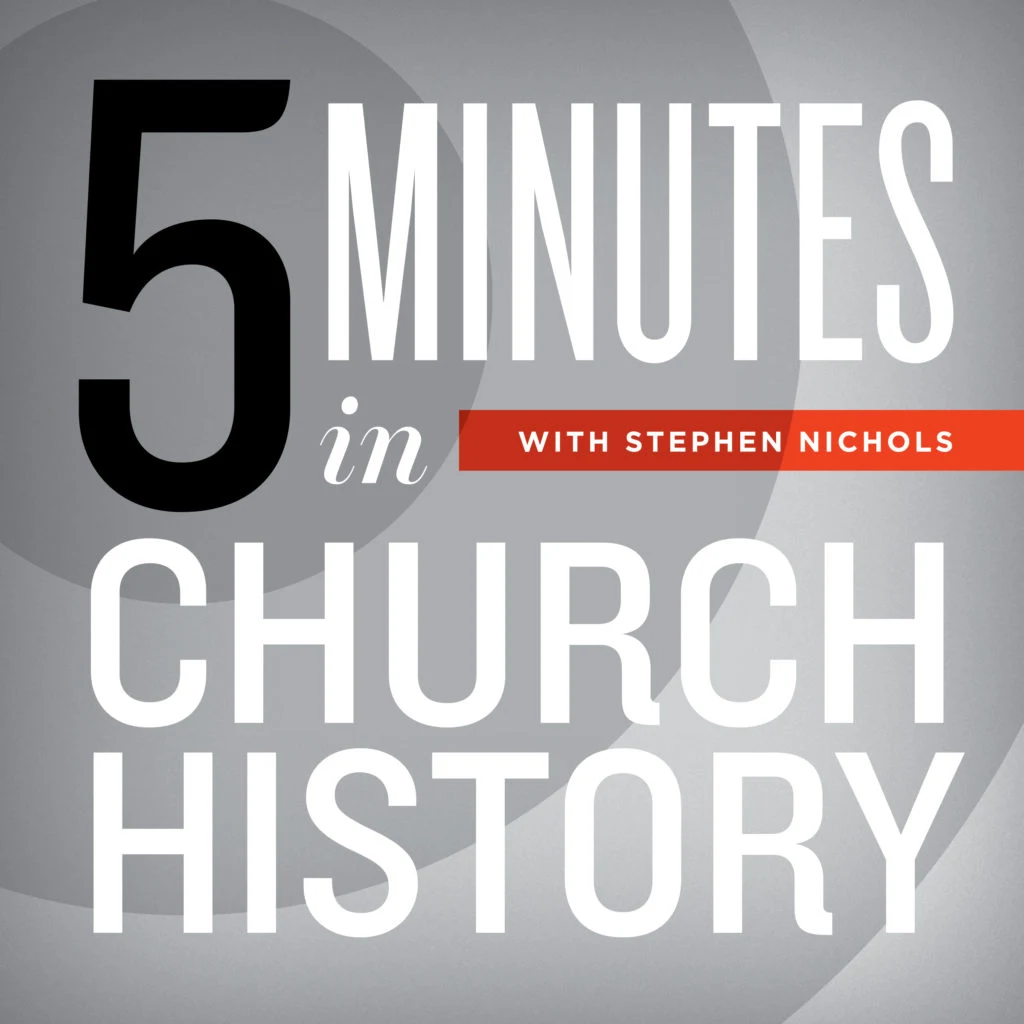Church History in Stained Glass

Stained glass windows are not just beautiful works of art; they also teach us about our past. On this episode of 5 Minutes in Church History, Dr. Stephen Nichols looks at the windows inside Santee Chapel at Lancaster Theological Seminary.
The Santee Chapel at Lancaster Theological Seminary in Pennsylvania is decorated with stained-glass windows like the great cathedrals of Europe. Many of those epic cathedrals use stained-glass windows to tell a story. You have to remember in the Middle Ages, of course, many people were illiterate.
Because illiteracy was widespread, stained-glass windows could be a means of telling the biblical story, depicting episodes from the Bible and portraying the biblical authors. In our day, we also use stained-glass windows to tell the story of church history, which can also be found in some of the great cathedrals in Europe and even in churches and chapels here in the United States, like in the Santee Chapel.
At the front of the Santee Chapel, as with many great cathedrals, the stained-glass images are depictions of biblical events and biblical authors. There is a window with King David playing on a harp, so we have the Psalms. We have Isaiah representing the Prophets and, of course, Moses representing the Pentateuch. There are also scenes from the life of Jesus, scenes of Him preaching, healing, and reigning as King as the ascended Christ. Finally there is a window depicting John, Paul, and Peter—authors of the New Testament.
Then, we start to move into the story of church history. There is a window that pictures the baptism of Augustine, a great figure from the early church. Then, representing the Middle Ages, we have St. Francis of Assisi preaching. Above St. Francis is a very dramatic window of Jan Hus, depicting his martyrdom. He was burned at the stake for his faith a century before the Reformers—a forerunner of the Reformation.
Representing the Reformation, there is a window of Huldrych Zwingli, the great Swiss Reformer of the city of Zurich. John Calvin is holding a Bible, a depiction of Calvin as the great preacher and expositor of Scripture. Above Calvin is the Scottish Reformer who spent some time in Geneva, John Knox.
Where's Luther, you ask? Well, at the Santee Chapel, Luther gets an entire window with three depictions all to himself. The first is of Luther posting the Ninety-Five Theses, as he stands in front of the church door with the theses unrolled and a mallet in hand on October 31, 1517. The posting of the Ninety-Five Theses led to the next event depicted—Luther standing before Charles the Fifth at the Diet at Worms. In stark contrast, there's Luther, a simple monk, in his simple monk's attire, and there's Charles with all of the grandeur and majesty of an emperor. Luther is taking his stand. Finally, the is a depiction of Luther translating the Bible. After being condemned at Worms, he was kidnapped by Frederick the Wise and taken to the castle at the Wartburg. While he was there, Luther worked on translating the Bible into the language of the German people. All of these were great events in the life of Luther.
There is one more window with two pictures of the lives of the Reformers. One is a picture of Caspar Olevianus and the other is Zacharius Ursinus. These are significant figures in the German Reformed Church, though many do not know their names or associate them with their significant contribution to the Reformed faith. They were the authors behind the Heidelberg Catechism, that beautiful piece of literature that comes to us from the sixteenth century.
In this particular chapel, these pieces of stained glass are not only beautiful works of art that rays of light shine through to brilliantly display an array of colors across the pews and throughout the chapel. Not only are they works of art, they teach us about our past. Church history in stained glass.
Recent Episodes
A Little Church History of a Middle Colony: Early Influences
December 10, 2025|American Church History
Gunpowder and a Proclamation
December 3, 2025|Geographical Perspectives
Thanksgiving in Church History
November 26, 2025|American Church History
3 Sermons on the Hallelujah Chorus
November 19, 2025|General Church History
Charles Jennens’ Libretto
November 12, 2025|General Church History
Cyprian of Carthage: Crisis in the 3rd Century
November 5, 2025|General Church History
